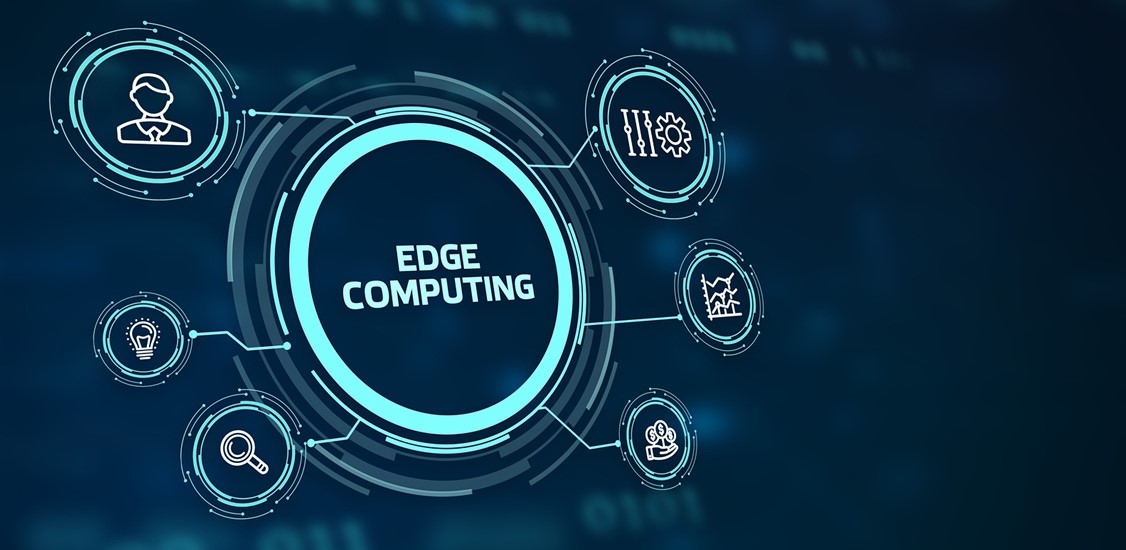
Cloud infrastructure is undergoing constant evolution, influenced by technological advancements and evolving business requirements. As businesses continue to depend more on cloud services, it becomes increasingly crucial to remain abreast of the latest trends that are shaping the future of cloud infrastructure. By maintaining a pulse on the latest trends and leveraging the right means and methods, businesses can build resilient and efficient cloud infrastructures that drive innovation and success. The future of cloud infrastructure is bright, and those who embrace these trends will be well-positioned for growth and competitive advantage. In this complete article, we will delve into five key trends and their far-reaching implications for businesses.
1. Edge Computing: Redefining Infrastructure Orchestration

Edge computing is revolutionizing the way businesses think about infrastructure. As the deployment of edge computing grows, it brings about a fundamental shift in how teams manage and orchestrate infrastructure. Edge computing directs to the practice of processing and diagnosing data closer to its source, reducing latency and improving real-time decision-making.
With edge infrastructure gaining traction, businesses are transforming their operations. For instance, The Home Depot has equipped its store associates with connected devices, turning each store into its own data center. Self-driving cars, on the other hand, rely on edge computing to make split-second decisions without relying on constant internet connectivity.
This shift towards edge computing has led to an explosion of options for businesses. Hyperscalers like AWS, Microsoft Azure, Google Cloud, and specialized vendors are growing in tandem. Additionally, near-cloud infrastructure providers like Fastly and CloudFlare offer low-latency computing services for applications requiring real-time responsiveness.
While this proliferation of options provides flexibility for businesses, it also introduces challenges. The need to manage multiple providers and ensure consistency across different ecosystems becomes paramount. To address these challenges, businesses require tooling that provides simplicity, connectivity, and automation across multi-cloud and edge environments.
2. Security: Embracing an Identity-First Approach
The rapidly increasing number of endpoints, devices, and applications has rendered traditional perimeter security models ineffective. In this new landscape, businesses must adopt an identity-centric approach to security. Zero-trust architecture, which constantly verifies user, workload, and device identities, is gaining prominence.
Legacy security practices, such as storing passwords in plaintext and providing broad access to systems, are no longer viable in a zero-trust environment. Confidential data must be encrypted and tightly managed, ensuring access is granted only to those with a legitimate business need.
Adopting a zero-trust approach requires a multi-year transformation that impacts people, processes, and tooling. However, the benefits of enhanced security and reduced risk justify the effort. By embracing an identity-first approach, businesses can protect critical data and mitigate the evolving threat landscape.
3. Networking: Managing Complexity and Ensuring Secure Access
The shift towards multi-cloud and hybrid architectures has led to increased complexity in networking. Software-defined networks, network overlays, and service meshes are replacing traditional physical hardware for routing and middleware layers. However, this transition is not without challenges.
Networking approaches vary across different teams and departments, leading to fragmented environments. This fragmentation makes it difficult for operators and security teams to debug problems and ensure secure access. To address this issue, organizations need to drive standardized approaches and automate network management.
By implementing a centralized and standardized approach to networking, businesses can reduce complexity and simplify the process of securing networks. Automation plays a crucial role in streamlining network management and enhancing the security of infrastructure.
4. Internal Developer Platforms: Streamlining Development Processes
As infrastructure becomes more complex, developers are seeking ways to bypass its intricacies. Internal developer platforms have emerged as a solution to abstract the Complexity of infrastructure, allowing application teams to focus on delivering business value.
Internal developer platforms enable platform teams to define standardized workflows and patterns within an organization. These platforms provide consistency, compliance, and security controls, accelerating development timelines. By reducing the burden on engineering teams and providing standardization, internal developer platforms enhance developer productivity.
However, the rise of self-service portals also introduces new challenges. Modern applications often rely on a mix of different cloud services, necessitating the management of isolated cloud environments for testing and troubleshooting. Seamless management of these components is crucial to ensuring efficient development processes.
5. Infrastructure Management and Generative AI: Automating Complexity
As businesses grapple with the increasing Complexity of infrastructure, automation becomes essential. Infrastructure as Code (IaC) brings consistency to provisioning and management workflows, enabling operations teams to anticipate and resolve issues more effectively. Self-service portals further reduce the reliance on engineering expertise for managing various systems and tools.
However, the growing volume of code and the rise of generative AI tools present new challenges in terms of security and compliance. Organizations need a centralized approach to infrastructure management to monitor vulnerabilities effectively and enforce policies and controls.
While AI can assist in managing Complexity, it should not entirely replace developers and operations teams. AI-powered tools can surface issues and automate certain tasks, allowing human operators to utilize their expertise in resolving complex problems. By leveraging AI, businesses can enhance productivity while ensuring the safety and security of their infrastructure.
Conclusion
The cloud infrastructure landscape is evolving rapidly, driven by emerging trends that shape the way businesses operate. Edge computing, security, networking, internal developer platforms, and infrastructure management with generative AI are key trends that businesses need to understand and embrace.
To stay ahead in the competitive cloud market, businesses must adapt to these trends and leverage the opportunities they present. Whether it’s embracing edge computing, adopting a zero-trust security approach, streamlining networking, implementing internal developer platforms, or automating infrastructure management, businesses that navigate these trends effectively will thrive in the cloud-first era.
In a world where technology evolves at lightning speed, staying informed is not just an option—it’s a necessity. Uprite IT Company brings you best Cloud Infrastructure services.

